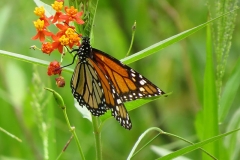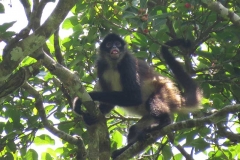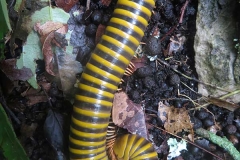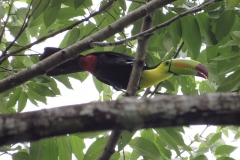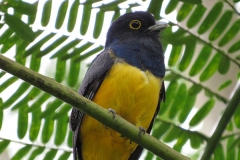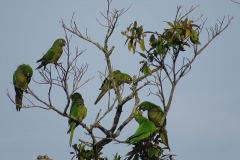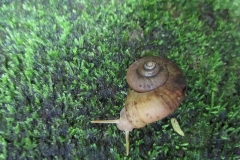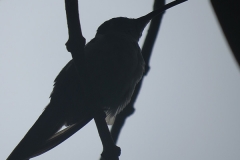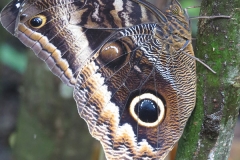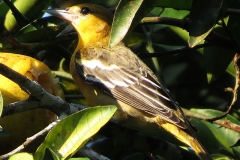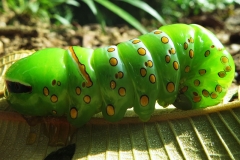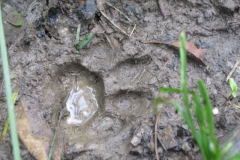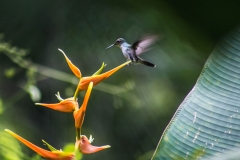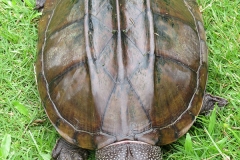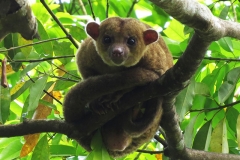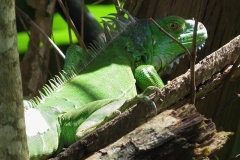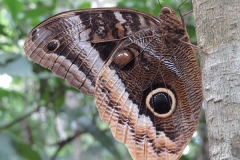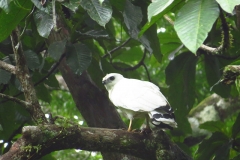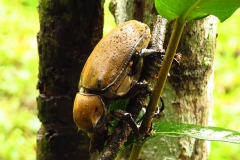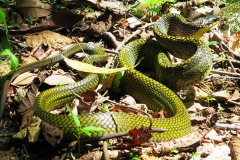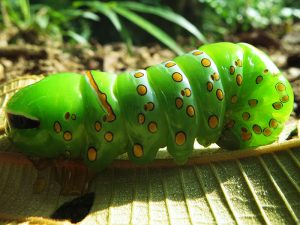 The Uxpanapa rainforest is one the most biologically diverse areas in all of Mexico. This forest is the Veracruz portion of the Selva Zoque or Zoque Rainforest, known for being the most endangered rainforest in all of Mesoamerica and a close second place in size, only to the Calakmul rainforest in Quintana Roo.
The Uxpanapa rainforest is one the most biologically diverse areas in all of Mexico. This forest is the Veracruz portion of the Selva Zoque or Zoque Rainforest, known for being the most endangered rainforest in all of Mesoamerica and a close second place in size, only to the Calakmul rainforest in Quintana Roo.
Wildlife abounds in this pristine landscape of greenery over huge rock formations. However, most of the animals live or use the precious treetops for their very existence. Spider monkeys, howler monkeys, parrots, toucans, tropical porcupines, arboreal lizards and thousands of butterflies are just some of the species that never see the rainforest from the bottom up. Other species use caves as their refuge: cave shrimp, fish, frogs, tarantulas, crickets, crabs, endemic birds and hundreds of bats all find safety amongst the sparkling stalactites and stalagmites.
 Still others impress us with their magnificent presence on the forest floor like the mysterious yet fragile jaguar, ocelot, margay, tapir, peccaries, pacas, brocket deer and black agouti. Venomous snakes like the respectable Fer de lanz or nauyaca are present, however, it is much more likely to find one of the other beautiful and harmless snakes that run through the forest looking for crickets and frogs.
Still others impress us with their magnificent presence on the forest floor like the mysterious yet fragile jaguar, ocelot, margay, tapir, peccaries, pacas, brocket deer and black agouti. Venomous snakes like the respectable Fer de lanz or nauyaca are present, however, it is much more likely to find one of the other beautiful and harmless snakes that run through the forest looking for crickets and frogs.
All life is admirable in this dynamic and colorful habitat. Behind each leaf, around each tree, inside each crook there are surprising forms of life to be discovered and remembered. Some may even show you the way, like the Blue Morpho Butterfly, others may accompany you with their song, like the endemic Nava´s wren, and still some others, like a defensive Spider monkey, may even remind you of the difficult relationship that humans have created with nature in the past. Each animal is a teacher if we are willing to pay attention and learn.
The Uxpanapa rainforest is a perfect site to release once-captive wildlife. BiodiverCity works with wildlife veterinarians and local members of the community to release wild individuals that were injured, orphaned or fell victim to the illegal pet trade. Monitoring of released individuals is a great opportunity for research students and volunteers to get field experience and directly aid in the fight to protect endangered species.
Part of our conservation efforts support local rangers to survey trails and priority wildlife sites, diminishing poaching and illegal tree cutting.
